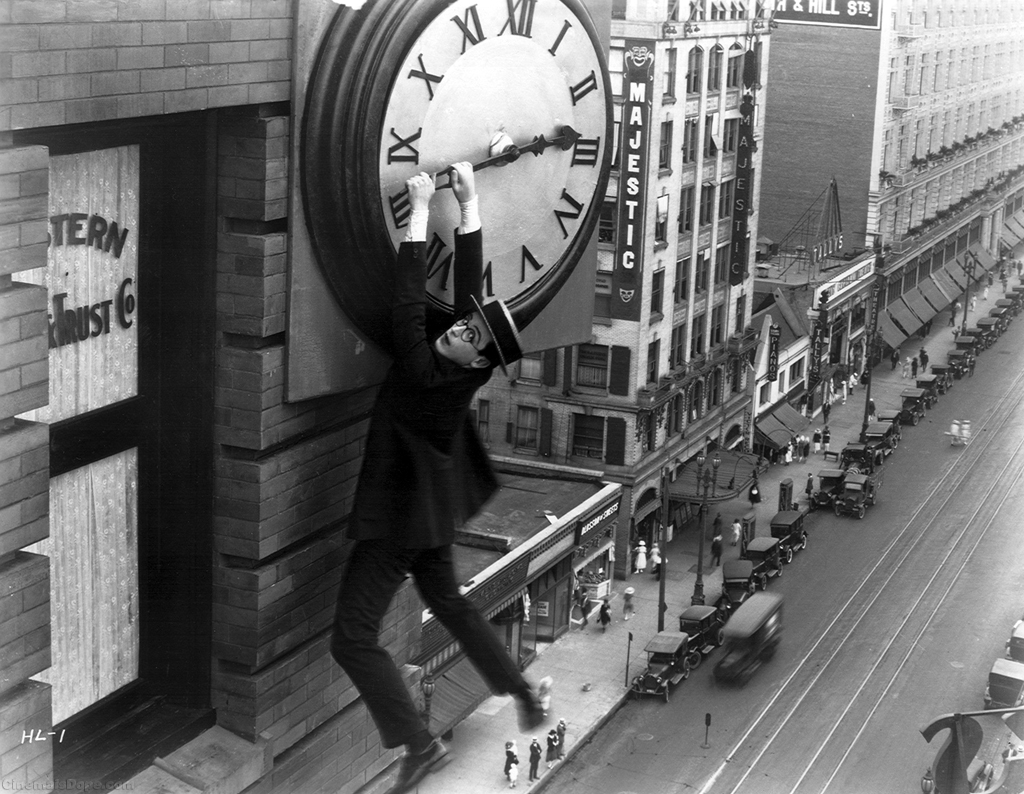
C'mon now! The winter is not a time to hide yourself away! Pull on that parka, mettez vos mitaines, harness up your huskies and mush your way to some of the coolest exhibitions of the new year. Mush, I say! MUSH!
1. PETER DOIG / No Foreign Lands
At the Montreal Museum of Fine Arts
(January 25 to May 4, 2014)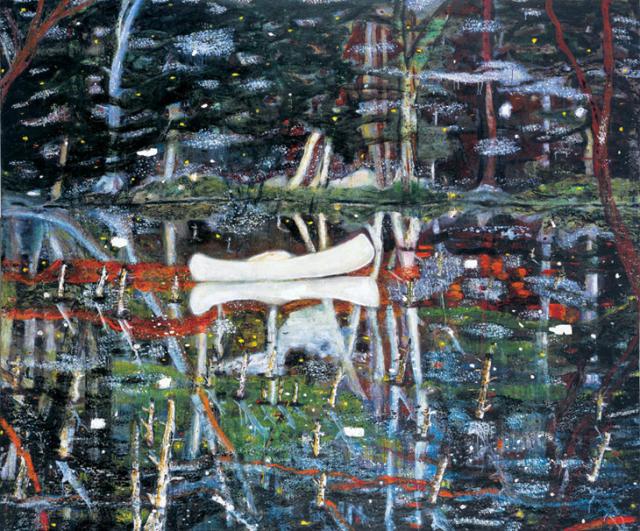 With a solo show at the Tate Britain, a group exhibition at the Saatchi Gallery, and a Turner Prize nomination, artist Peter Doig continues to gather praise, prestige and prominence wherever his work is shown (or auctioned off—in 2007, his painting White Canoe, pictured above, sold at Sotheby's for $11.3 million). Doig's oeuvre shows a solid commitment to the decorative tradition in painting, lashed together with an exciting modern inventiveness and a surprising use of colour. Go check out the new exhibition of his work at the MMFA, organized in collaboration with the Scottish National Gallery of Modern Art, Edinburgh.
With a solo show at the Tate Britain, a group exhibition at the Saatchi Gallery, and a Turner Prize nomination, artist Peter Doig continues to gather praise, prestige and prominence wherever his work is shown (or auctioned off—in 2007, his painting White Canoe, pictured above, sold at Sotheby's for $11.3 million). Doig's oeuvre shows a solid commitment to the decorative tradition in painting, lashed together with an exciting modern inventiveness and a surprising use of colour. Go check out the new exhibition of his work at the MMFA, organized in collaboration with the Scottish National Gallery of Modern Art, Edinburgh.
2. CHRISTIAN MARCLAY / The Clock
At the Musée d'art contemporain de Montréal
(February 22 to April 20, 2014)
You. Have. To. See. This.
No, really. I have seen it myself, and it boggles the eye. And ear. And everything. What's so amazing about this Venice Biennale Golden Lion winner? OK, dig it: the film The Clock is actually a clock, made up of a 24-hour montage of thousands of time-related scenes from movies and a sprinkling of TV shows, painstakingly edited and spliced together to be shown in real time. Each scene contains an indication of time (e.g. – a timepiece, or a piece of dialogue) that is synchronized to show the actual time of day. In addition, the narrative arc, dialogue, character interplay, sound effects and scoring (cobbled together from hundreds of different films and shows, remember) all somehow meld and blend to form one cohesive, addictively-watchable, fantastic movie. Which in itself, is an ode to film and television history. Did I just blow your mind? Well, let me continue with the detonation. With the help of only a handful of assistants, it took Christian Marclay just THREE YEARS to complete his masterpiece. KA-freakin'-BOOM.
3. Scandal! Vice, Crime and Morality in Montreal, 1940-1960
At the Centre d'histoire de Montréal
(Until October 2015)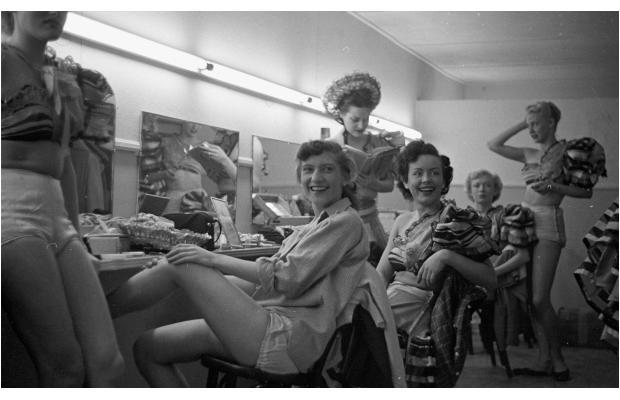 Sure, you love Montreal for its joie de vivre and relaxed attitude towards smoking funny cigarettes in public, but today's version of Montreal vice looks like kid's stuff compared to what your grandparents experienced. Known as the “Paris of North America”, Montreal had hundreds of brothels and burlesque joints operating openly next to jazzed-out nightclubs and illicit gambling dens. Tourists would come to town to be entertained, titillated, and even a little shocked at the risqué goings-on. Oh – and have I mentioned anything about the gangs and heroin trade yet? No? Well, I won't spoil the surprise. Go and learn all about it at the Centre d'Histoire de Montreal.
Sure, you love Montreal for its joie de vivre and relaxed attitude towards smoking funny cigarettes in public, but today's version of Montreal vice looks like kid's stuff compared to what your grandparents experienced. Known as the “Paris of North America”, Montreal had hundreds of brothels and burlesque joints operating openly next to jazzed-out nightclubs and illicit gambling dens. Tourists would come to town to be entertained, titillated, and even a little shocked at the risqué goings-on. Oh – and have I mentioned anything about the gangs and heroin trade yet? No? Well, I won't spoil the surprise. Go and learn all about it at the Centre d'Histoire de Montreal.
4. OLI SORENSON + ANDRÉE-ANNE DUPUIS BOURRET / La Systématique des formes
At the Centre d'exposition Lethbridge
(Bibliothèque du Boisé, 2727 Thimens Blvd.)
(Until January 19, 2014)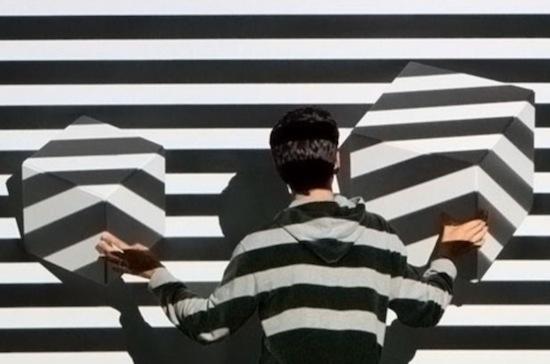 Quebec's own Andrée-Anne Dupuis Bourret is known for combining drawing and sculpture together to very unique effect. She's interested in the dialectical possibilities of a schematic system between organic shapes (art speak translation: is the randomness we see in complex collections of organic forms really all that random? Or complex? Is there something more (or less) going on? Dupuis Bourret works to figure that out.) Oli Sorenson loves to play with digital and online content, re-shaping and re-contextualizing, producing art like a DJ samples and produces music. In fact, Sorenson is known in the music world as VJ Anyone, and has collaborated with such musical artists as Leftfield, M.I.A. and Bloc Party. Take a date and go see their joint exhibit this winter at the Centre d'exposition Lethbridge.
Quebec's own Andrée-Anne Dupuis Bourret is known for combining drawing and sculpture together to very unique effect. She's interested in the dialectical possibilities of a schematic system between organic shapes (art speak translation: is the randomness we see in complex collections of organic forms really all that random? Or complex? Is there something more (or less) going on? Dupuis Bourret works to figure that out.) Oli Sorenson loves to play with digital and online content, re-shaping and re-contextualizing, producing art like a DJ samples and produces music. In fact, Sorenson is known in the music world as VJ Anyone, and has collaborated with such musical artists as Leftfield, M.I.A. and Bloc Party. Take a date and go see their joint exhibit this winter at the Centre d'exposition Lethbridge.
5. How architects, experts, politicians, international agencies and citizens negotiate modern planning: Casablanca Chandigarh
At the Canadian Centre for Architecture
(Until April 20, 2014)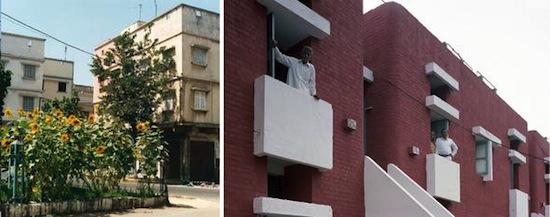 So the title of the exhibit isn't all that sexy. Whatever – the CCA knows what it's doing. Casablanca Chandigarh provides an interesting look into what de-colonization did to certain cities once ruled from abroad, once subjugated to conform to non-native norms, aesthetics and ideals. In the (relative) absence of a pervasive Eurocentrism, architects and urban planners working in the non-Western areas of the world could no longer plan sites as if they were terrains vagues and their inhabitants, silent subjects. The end of colonial rule in many of these countries provoked new modernist attitudes and sensibilities – a real shift in thinking about the architecture of the modern city.
So the title of the exhibit isn't all that sexy. Whatever – the CCA knows what it's doing. Casablanca Chandigarh provides an interesting look into what de-colonization did to certain cities once ruled from abroad, once subjugated to conform to non-native norms, aesthetics and ideals. In the (relative) absence of a pervasive Eurocentrism, architects and urban planners working in the non-Western areas of the world could no longer plan sites as if they were terrains vagues and their inhabitants, silent subjects. The end of colonial rule in many of these countries provoked new modernist attitudes and sensibilities – a real shift in thinking about the architecture of the modern city.